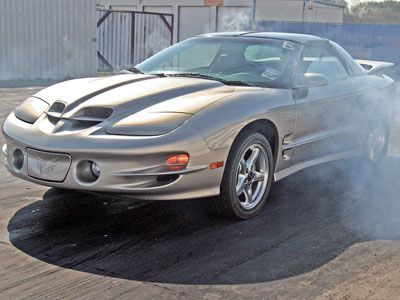
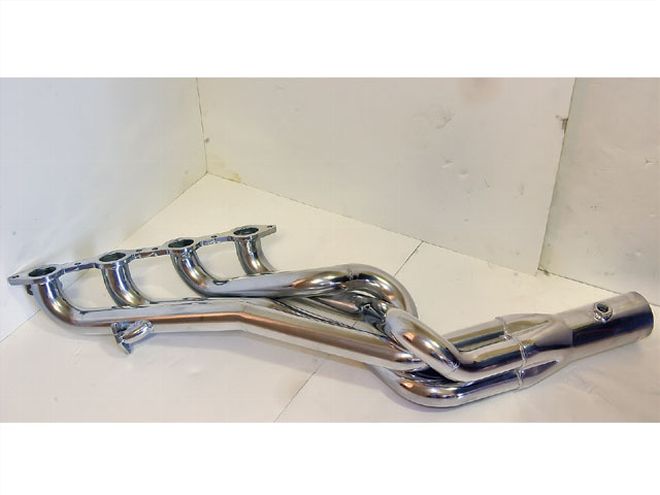
While race-car performance is the goal of a large cross-section of enthusiasts, the key to completing a very powerful "Cam-Only" LS1 build is a delicate balance of both parts and tuning talent. As described in Parts I and II of LS1 Power Plan (HPP, Aug. and Sept. '08), a well-thought-out combination of parts for the 346-cubic inch mill can increase both power and torque without sacrificing driveability or turning your Bird into a "high-rpm" only car.
Before heading off to the chassis dyno and dragstrip to quantify the gains, in Part I of LS1 Power Plan we freed up the intake and exhaust by installing an SLP LS6 intake manifold and a Jet-Hot headers/off-road Y-pipe system, gaining almost 26 rwhp. Since the engine now has the intake and exhaust flow required to make full use of an aftermarket camshaft, Part II detailed the removal of the stock LS1 cam and the installation of an aggressive Comp Cams hydraulic roller. Once the cam was installed, the weak factory valvesprings and pushrods were addressed with a full Comp dual valvespring kit and Hi-Tech pushrods, paving the way for custom tuning to unleash the newfound power.
Now retired from daily driver duties, Harold Baker's automatic-equipped '00 WS6 T/A carries 66,000 miles and is cruised for fun and used to bracket race in the Texas Muscle Car Club Challenge Series. In addition to the components installed in Parts I and II, the car has a long list of free and cost-effective mods including a Corsa after-cat exhaust, BBK 80mm throttle body, and an aftermarket suspension.
Power Products Recap <strong>Power Products Recap</strong><br>Available for all '98-'02 LS-equipped Firebirds, Jet-Hot's tuned long-tube four-into-one headers for the '00 application (PN 2533, retail $500.95) feature 1.75-inch primaries, a 3-inch collector, and a proprietary Sterling finish that will reduce both header surface temperature and look great. The Jet-Hot 3-inch Y-pipe system is unique in that it is offered with removable hi-flow catalytic converters (PN 50800, retail $485) and comes complete with welded-in O2 bungs and all the hardware required for installation.
<strong>Power Products Recap</strong><br>Available for all '98-'02 LS-equipped Firebirds, Jet-Hot's tuned long-tube four-into-one headers for the '00 application (PN 2533, retail $500.95) feature 1.75-inch primaries, a 3-inch collector, and a proprietary Sterling finish that will reduce both header surface temperature and look great. The Jet-Hot 3-inch Y-pipe system is unique in that it is offered with removable hi-flow catalytic converters (PN 50800, retail $485) and comes complete with welded-in O2 bungs and all the hardware required for installation.
Follow along as Matt Garzonie at Real Performance Motorsports (RPM) in Lewisville, Texas, tunes the T/A and tests it on RPM's Dynojet chassis dyno. Once the tuning and dyno testing are complete, the owner will put in some seat time and head out to the Texas Motorplex in Ennis, Texas, to reveal the performance gains on the track.
Cam Tuning: How To Avoid "One And Done"
As soon as the installation of the camshaft and valvetrain was completed, the task of tuning the car fell to Matt Garzonie of RPM. According to Matt, "Enthusiasts often don't recognize that changing from a stock cam to an aftermarket one requires significant tuning expertise. The farther a cam profile gets from stock, the greater the number of changes that must be done in order to get the engine to run, idle, and perform well across the rpm band. For almost every cam that we install at RPM, we have the 'one and done' theory, which states: 'Without tuning, the car will start exactly one time before it won't start again.' While the Bird is idling during initial start up, the computer is attempting to adjust to the changes to the vacuum present at idle. Combine that with the fuel being distributed to the engine at the incorrect pulse width for valve timing events and the computer simply can't adjust itself when the combined changes are so large."
Garzonie continues, "For LS1 and LS6 applications that do not contain the new LS2/LS3-style electronic idle air control (IAC) valve that automatically modulates the amount of air at idle, we routinely drill a small hole in the throttle body blade and adjust the throttle body and idle speed up (900-950 idle speed) in order to get the Pontiac restarted. We utilize HP Tuners' VCM Suite to adjust a number of variables including the base-running idle and airflow table, initial timing, IAC park position airflow, and the throttle follower decay and delay tables.
"After the vehicle idles, we start adjusting the amount of fuel that the cylinders are getting by using the volumetric efficiency (VE) table to trim or richen the levels at idle. Once the Pontiac is warm, it is shut down and allowed to cool. This is especially important on a vehicle with new valvesprings as Comp wants the springs to be heat cycled before being operated at wide-open throttle. In addition, by allowing the car to cool down, the process of tweaking the cold-start tune can be refined so we are sure that it will start right up and idle properly when cold.
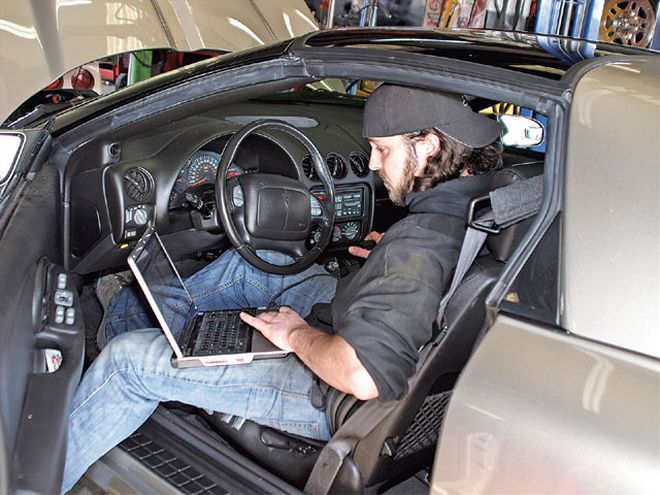
"After the engine is started again, I reference our extensive database of custom tunes and create one that will generate maximum safe power. Depending on the camshaft and components, we generally shoot for wide-open throttle air/fuel ratios between 12.5 and 12.8, with total timing in the 24 to 28 degree range. Stock LS1s as a rule usually have 24 degrees of timing and an air/fuel ratio ranging anywhere from 12.1 to 13.1, with around 12.4 as the average.
"For the initial dyno pull, I put in 24 degrees of timing and the air/fuel ratio registered at 11.7. Although the total power was 377.3 and 362.1, we knew that additional changes to the timing and fuel would generate better power.
"Once the air/fuel ratio is in the range that I am looking for, I adjust the timing and fuel until the engine first starts to register knock and then either add fuel or reduce timing so that it can generate maximum power without easily producing knock when the engine is heat-soaked.
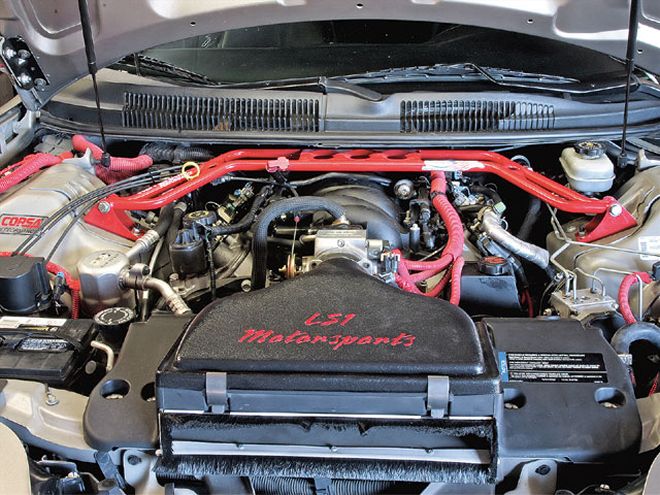
"After a series of adjustments, I ended up pulling out a total of 6 percent fuel from 3,200 to the new redline of 6,800 (stock 6,250) and adjusted the timing ramp to be more aggressive, but retained 24 degrees." See the Dyno Testing section for the results.
Dyno Testing & Results
Testing of the WS6 '00 Trans Am was performed on Real Performance Motorsports' Dynojet Model 248C. It's capable of measuring up to 1,200 hp and is optioned with the above-ground kit and the Commander wide-band 02 sensor so air/fuel ratios can be charted. The barometric pressure, air-inlet temperature, and SAE correction factors for the runs are listed below. Peak and average horsepower and torque are the result of dyno pulls recorded between 3,800 and 5,800 rpm for the baseline, and 3,900 and 6,200 for the Comp Cams configuration.
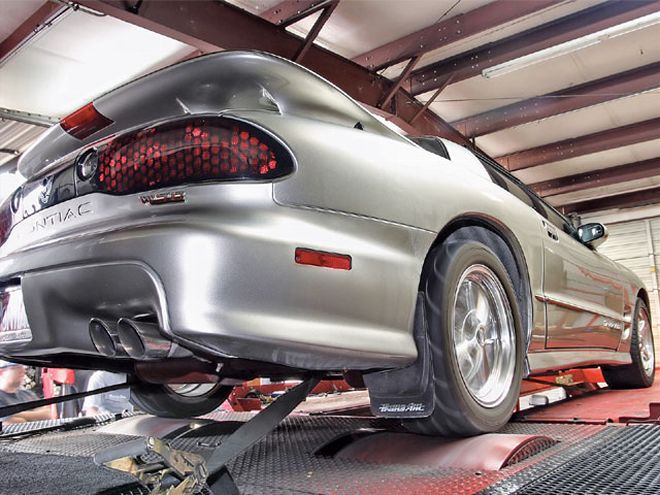
Test Parameters
Baseline
Inlet-air temperature 101.0 degrees F, barometric pressure 29.20, vapor pressure 0.035 inch HG, correction factor 1.01.
LS1 Power Plan Part I
Inlet-air temperature 72.3 degrees F, barometric pressure 29.97, vapor pressure 0.091 inch HG, correction factor 0.97.
LS1 Power Plan Part II
Inlet-air temperature 77.1 degrees F, barometric pressure 29.72, vapor pressure 0.15 inch HG, correction factor 0.99.
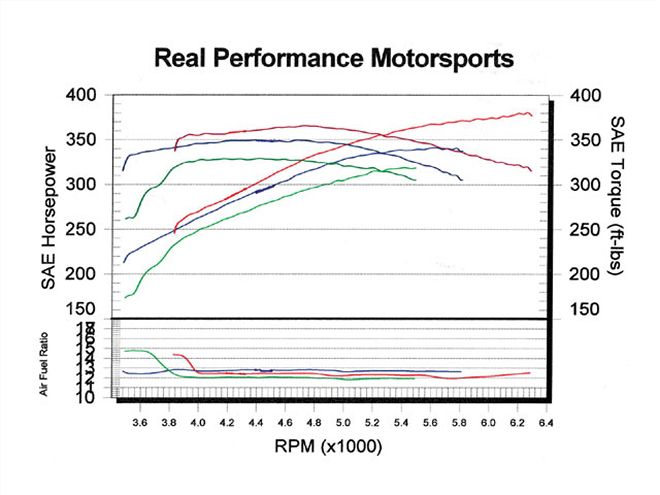 Here's the baseline (green) versus LS1 Power Plan Part I (blue) and Part II (red).
Here's the baseline (green) versus LS1 Power Plan Part I (blue) and Part II (red).
Drag Testing
Drag testing was conducted before and after the installation of the LS1 Power Plan components at the Texas Motorplex in Ennis, Texas, which is a quarter-mile racing facility. The track elevation is 500 feet above sea level, and all testing was performed at the same location.
Conclusion
In total, the T/A gained 62.1 hp and 36.5 lb-ft of torque. One look at the dyno chart confirms that we weren't simply trading low-end torque and horsepower for high-revving gains. At each point on the RPM and torque curves, the horsepower and torque bested both the baseline and Part I numbers. In total, average horsepower and torque gains of 46.2 and 32.1 indicate that the T/A has significantly more midrange and top-end power without sacrificing low-rpm driveability.
Harold Baker states, "Power has once again been increased and, more importantly, my T/A still maintains a nice idle quality and can be driven anywhere. Although the cam may seem to be large for a stock-bore LS1, it certainly doesn't act like it. By utilizing a free-flowing exhaust and going to an LS6 manifold, the engine was able to use the additional duration and lift to produce some impressive power numbers.
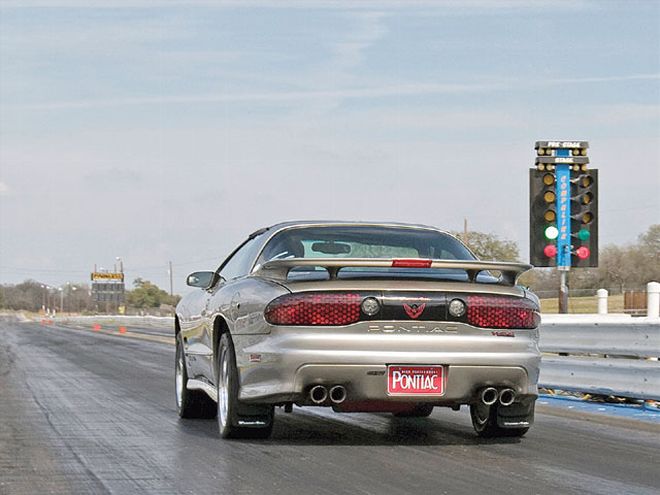
"While dynos are great to document the absolute numbers gained, the dragstrip provided the proof-positive that I was looking for-going from a 13.31 at 104.69 mph through the traps to a 12.78 at 109.59 mph shows that the power translated well to the track. In addition, I was particularly impressed with how consistently the T/A ran. Even heat-soaked, the difference between the best and worst pass at the track was less than a tenth of a second."
According to Brian Lohse, co-owner of RPM, "We were impressed by how well the parts worked in conjunction with each other and have found this combination to be extremely effective on all of the LS1/LS6 and LS2 street-based applications. In addition to top-notch parts, it has to be stressed that a custom tune was required and, while enthusiasts can perform the mechanical portion of the work by themselves, tuning requires experience and a thorough knowledge of the variables that will allow a tuner to optimize everything from idle characteristics to maximum power and torque under the curve."
This cam really comes alive with either a ported set of factory cylinder heads or a number of the small-runner-based aftermarket head offerings. For stock-block LS1 enthusiasts looking to make 420 or more rear-wheel horsepower, the next step is to upgrade the flow capacity of the cylinder heads and put in some fuel injectors that will safely support the increased fuel requirements."
By increasing the airflow into the motor, freeing up the exhaust system, and putting in a streetable camshaft, this T/A joined the ranks of the thousands of LS1 "Cam-Only" missiles roaming the streets. With a careful selection of parts and the right tuning, you, too, can create your own LS1 Power Plan.
There were two errors in the first installment of this story we want to clear up. First, it was stated that "underhood temperature" is reduced by approximately 300-400 degrees when Jet-Hot's Sterling finish is used on the headers. Correctly stated, the "header pipes' surface temperature" is reduced 300-400 degrees. Second, was that the colder heat range spark plugs will help to reduce "cylinder temperatures." Correctly stated, the colder heat range spark plugs reduce "plug tip temperature."